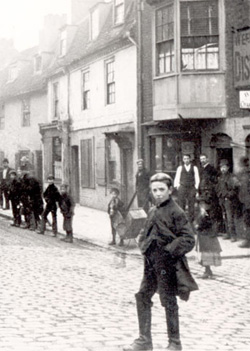Contents
Deptford New Town: A 19th century working class estate
Setting the Scene

St Johnís Deptford, or Deptford New Town, is an excellent example of a working class Victorian suburb. It is unusual in that it was developed largely by one landowner from one estate - but over a long period of time - and because much of the development is largely intact today.
St Johns is in the Deptford area of the London Borough of Lewisham. It forms the thinner western end of the wedge of streets between New Cross Road, Deptford Broadway and Brookmill Road to the north and Lewisham Way to the south. Administratively it sits entirely in the modern Borough of Lewisham but previously was in the Metropolitan Borough of Deptford and before 1900, when the Metropolitan Boroughs were founded, it was under the control of the Greenwich Board of Works and before that in the parish of St Paul Deptford.
†Its local government affiliations have hardly influenced its development as a suburb. The crucial factors in development were the role of the estateís freeholder, the Lucas family, their patronage of the newly established parish of St John and the growth of the town of Deptford.
St Johnís is unusual, not so much for its original character, but that it has survived largely intact; only its most northerly portion has been redeveloped. The survival has been due to good estate management and, followingr the estateís acquisition by Deptford Borough Council in 1964, its later designation as a conservation area.
In 1800, urban or suburban Deptford did not venture south of New Cross Road, but by 1900 the area was entirely urban. In St Johnís this process took place gradually over virtually the entire century.
In 1800 the district was pasture and market garden. It was split by only one road, the modern Tannerís Hill, then called Butt Lane, which was a southerly extension across the Broadway of the line of the High Street. Butt Lane continued across Lewisham Way to its terminus at open land on the modern Upper Brockley Road. There was another road, no more than a lane, called Dog Kennel Row, or Dark Lane, which linked Manor Farm, Brockley with the Broadway. Manor Farm stood on the modern Brakespeares Road between Lewisham College and the railway bridge. Mill Lane (the present Brookmill Road) ran for about 400 yards from its junction with the Broadway, where it terminated at the entrance to the waterworks.
